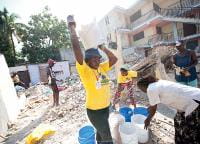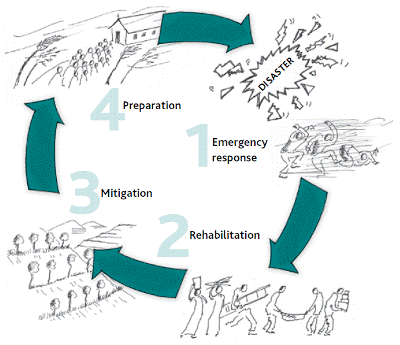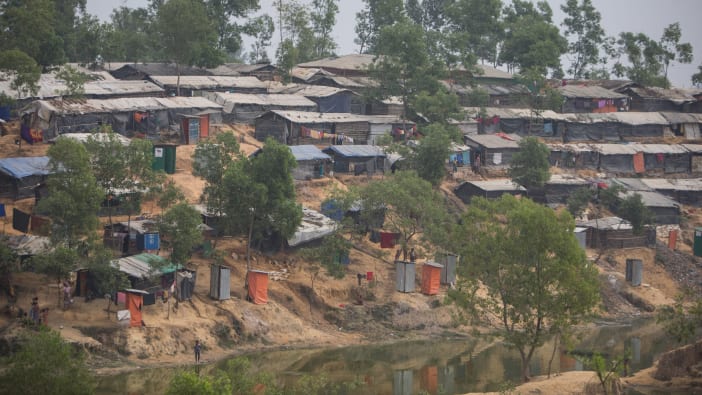Disasters are part of everyday life for a large part of the world’s population. Every year, between 600 and 800 natural disasters occur, some small and localized, others affecting several countries and many thousands of people.
According to the World Disasters Report 2010, over 304 million people were affected by natural disasters during that year alone and nearly 300,000 lost their lives. Severe floods in China affected 134 million people, whilst 20 million suffered in flooding in the Indus valley of Pakistan. Natural hazards in themselves may be difficult, if not impossible, to prevent. For example, an earthquake involves massive, uncontrollable underground forces. However, a hazard by itself does not always cause a disaster. If there are weaknesses – or vulnerabilities – in a community, the hazard can cause damage and death; a disaster is then the result. The process of reducing those vulnerabilities is known as Disaster Risk Reduction. Vulnerability is created by a variety of factors, for example:
- Lack of warnings and preparation for natural hazards.
- Poor quality housing in exposed locations.
- Dependency on a single source of income, which may be cut by the hazard.
- Inadequate or unprotected water supply.
Poverty is also a key factor, forcing many to exist in makeshift houses, located in unsafe places, often with unreliable sources of income, poor services and weak infrastructure.
For this reason, in 2010, 97% of the people affected by disaster and 80% of those killed lived in countries which would be considered middle-income or less developed.
In recent years climate change has increased the frequency and intensity of some weather-related hazards. Faster snow melt, rising sea levels and unpredictable weather patterns have increased flooding and droughts. Communities are being exposed to extreme hazards which are new to them. Human activity, such as forest clearance or farming on steep slopes, can cause degradation of the environment and increase the risk of floods or landslides.
Whilst the situation may appear gloomy, there is much that can be done to reduce risk and create safer, less vulnerable communities. In 2005, the 168 Member States of the UN committed to reduce disaster losses through a plan called the Hyogo Framework for Action. It also suggests best practice for any project which seeks to build safer communities. Good projects should:
- Give a higher priority to pre-disaster activities, not rely on response alone.
- Identify, assess and monitor the risks and develop good early warning systems.
- Develop safer communities through education, awareness and training.
- Reduce the risk factors which make people more vulnerable – eg improve housing, diversify livelihoods or protect water supplies.
- Increase preparation for disasters so that response is faster and more effective.











